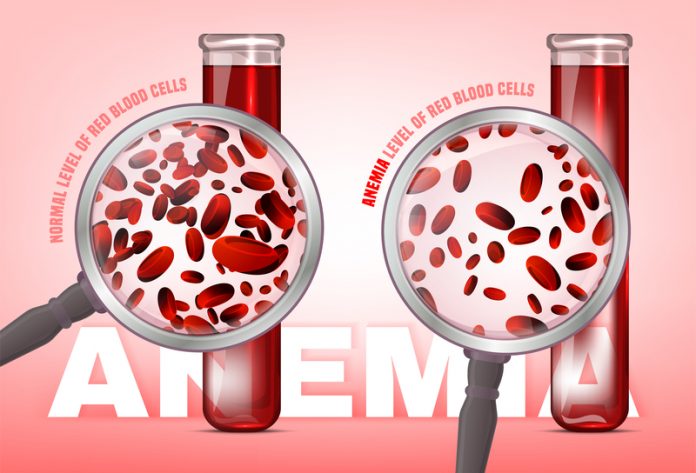Cecilia Van Cauwenberghe from Frost & Sullivan’s TechVision Group provides an overall perspective and analysis on the public health concern of anaemia, including the challenges and concerns when it comes to iron deficiency
According to the World Health Organization (WHO), anaemia is a public health concern that affects low-, middle- and high-income countries through highly relevant adverse consequences on both health and socioeconomic development. Anaemia implies a low blood haemoglobin concentration. However, measurements of haemoglobin, even along with mean corpuscular haemoglobin concentration, mean corpuscular volume, total iron-binding capacity, transferrin saturation, and zinc-erythrocyte protoporphyrin, among other tests, are not reliable indicators to determine the cause of anaemia.
The most significant contributor to anaemia is iron deficiency, leading to a type of anaemia named as iron deficiency anaemia. Indeed, near to 50% of cases of anaemia are associated with iron deficiency, in addition to adjacent causes of anaemia, including micronutrient deficiencies, such as folate, riboflavin, vitamins A and B12; acute and chronic infections, such as malaria, cancer, tuberculosis and HIV, and inherited or acquired disorders related to haemoglobinopathies (Bouri and Martin, 2018).
About the most significant health concerns related to iron deficiency adversely affects, deficiencies in cognitive and motor development causing extreme fatigue and low productivity are the most frequently noted. During pregnancy, iron deficiency anaemia may lead to low birth weight and an increased risk of maternal and perinatal mortality. The Micronutrients Database of the WHO Vitamin and Mineral Information System (VMNIS) summarises data on the micronutrient status of populations, collected from the scientific literature and through collaborators, including WHO regional and country offices, United Nations organisations, ministries of health, research and academic institutions, and non-governmental organisations. According to the information provided by VMNIS, approximately 43% of children, 38% of pregnant women, and 29% of women of reproductive age have anaemia globally, which represents around 273 million children, 496 million non-pregnant women and 32 million pregnant women worldwide (Eshag and Lindow, 2018).
Treatment and surveillance
Adequately treating anaemia demands an integrated approach founded on recognising and tackling the most remarkable contributing factors. From a public health perspective, iron deficiency anaemia should be addressed over the base of a dietary diversification and improved access to food, in combination with iron supplementation programmes (Minck et al., 2018). Other community actions must include programmes related to the treatment and prevention of infectious diseases (Rao et al., 2018). However, public initiatives must be also reinforced with new approaches to the disease, also tackling underlying causes not directly related to socioeconomic conditions (McGrath and Cotter, 2018).
Broadly speaking, iron deficiency is the consequence of a long-standing negative iron balance. Iron is stored mostly in the liver as ferritin or hemosiderin. When these molecules begin to progressively diminish their concentration, the needs of normal iron turnover cannot be met any more. From this critical point onward, this deficiency starts to compromise the supply of iron to the transport protein apotransferrin, and subsequently, transferrin saturation diminishes, whereas transferrin receptors in the circulation and on the surface of cells, including the erythron, increase.
Regarding therapeutics innovation, it is important to highlight that most oral iron therapeutics enclose the ferrous form of iron (Fe2+). However, recent innovations are starting to provide stable complexes for delivery by tightly binding ferric iron (Fe3+) to three maltol molecules, thereby resulting in a more effective, well-accepted oral iron treatment. Ferric maltol molecules allows developing more stable delivery methods facilitating iron absorption while minimising iron accumulation in human tissue and free-radicals generation in the gut. This molecular behaviour prevents further damage by free radicals in the gastrointestinal mucosa, hence avoiding inflammation and/or iron overload.
Final remarks
The WHO’s second global nutrition target for 2025 calls for a 50% reduction of anaemia in women of reproductive age. This goal can only be achieved through a synergistic combination of key programmes that address the most relevant factors contributing to a low blood haemoglobin concentration in human tissues, adequately customised to local conditions, aetiology and the prevalence of anaemia.
Acknowledgements I would like to thank all contributors from the industry involved with the development and delivery of this article from the TechVision Group at Frost & Sullivan.
References
Bouri, S. and Martin, J., 2018. Investigation of iron deficiency anaemia. Clinical Medicine, 18(3), pp.242-244.
Eshag, A. and Lindow, S., 2018. Iron deficiency and iron deficiency anaemia in pregnancy and the postnatal period. In Obstetrics and Gynaecology Forum (Vol. 28, No. 4, pp. 9-13). In House Publications.
McGrath, T. and Cotter, M., 2018. Iron Refractory Iron Deficiency Anaemia: A Rare Cause of Iron Deficiency Anaemia. Irish medical journal. #
Minck, S., Roberts, T., Flores, C., Thomson, A., Hong, F., Spigiel, T. and Saxon, B., 2018. Toolkit for maternity blood management: improving identification and management of iron deficiency and anaemia. Women and Birth, 31, p.S26.
Rao, S., Thomas, T., Swaminathan, S., Varghese, J.S., Kurpad, A.V., Mondal, A., Kulkarni, B., Sachdev, H.P.S. and Kapil, U., 2018. Current Practice of Iron doses for Treatment of Iron Deficiency Anaemia-A Review. Indian Journal of Community Health, 30(Supp), pp.31-38.
Cecilia Van Cauwenberghe, PhD, MSc, BA
Associate Fellow and Senior Industry Analyst
TechVision Group, Frost & Sullivan











